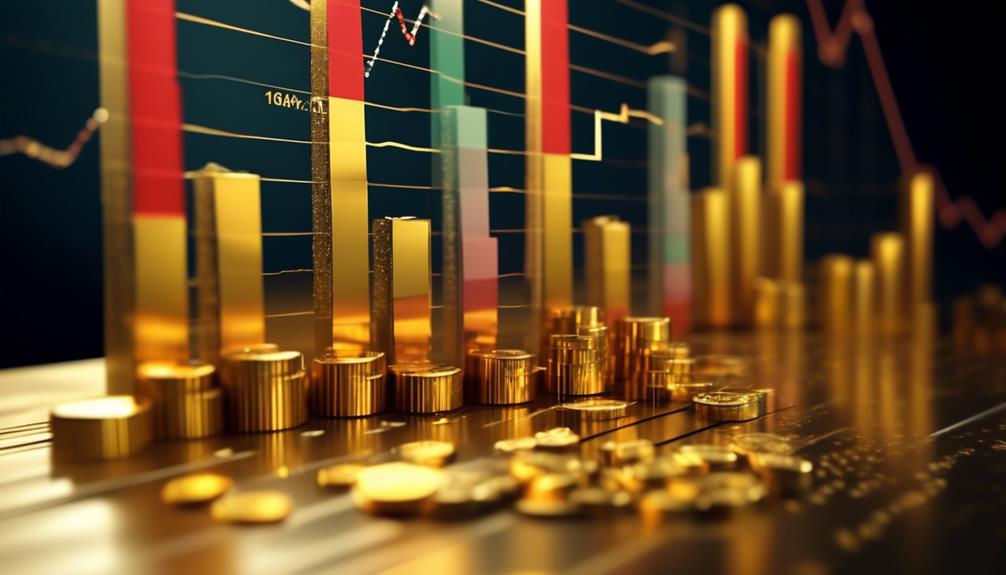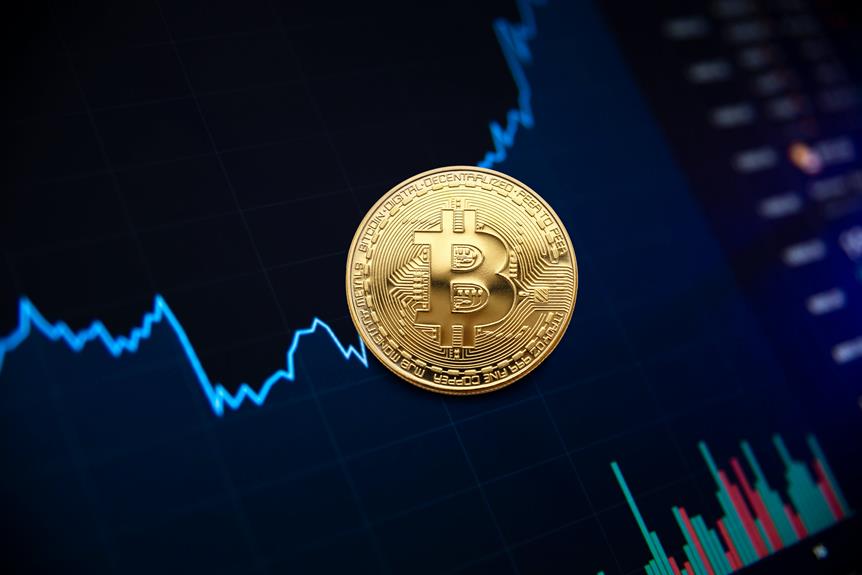Welcome to the fascinating world of gold market dynamics. Have you ever wondered how the value of gold is influenced by global events? Or perhaps you've marveled at the intricate dance between supply and demand in the gold industry?
As you journey through the twists and turns of the gold market, you'll discover a treasure trove of insights waiting to be unearthed.
With over 40 years of experience in gold and precious metals investing, I understand the weight of the financial decisions you make and the trust you place in the information you receive. That's why I've embarked on this blog to provide you with the latest updates, trends, and information in the precious metals and gold IRA industries. My goal is to empower you with the knowledge you need to make informed choices with confidence.
In a world where banks, the monetary system, and politicians can be unpredictable, I believe in having more control over my money. I'm not alone in this sentiment, as many renowned financial experts and seasoned gold investors share similar views. They recognize the enduring value of gold as a hedge against economic uncertainty and inflation.
So, join me as we delve into the world of gold market statistics, guided by reliable sources and seasoned insights. Together, we'll navigate the fluctuations and trends that shape this valuable industry, arming you with the knowledge to make informed decisions.
Key Takeaways
- Gain control over your money by understanding gold market trends and performance.
- Make informed investment decisions based on gold price trends and economic events.
- Analyze the industry with confidence using comprehensive gold market statistics.
- Take control of your financial destiny by understanding key factors affecting gold supply and demand.
- Navigate the monetary system and make decisions that are right for you with the help of gold market statistics.
Gold Price Trends Over Time

Gold prices have been on a rollercoaster ride over the past decade, experiencing significant ups and downs. In 2020, gold prices surged by a remarkable 24.43%, drawing the attention of seasoned investors and financial experts. Conversely, 2013 witnessed a substantial 27.79% decrease in gold prices, a notable downturn that sparked discussions among analysts and market observers.
As of January 16, 2024, the current price of gold stands at $2,038.18 per ounce, reflecting a 13.08% increase in 2022 and a 1.20% decrease in 2023. These fluctuations have prompted discussions among experts and investors about the underlying factors driving gold's value.
Gold's historical price data reveals its enduring status as a long-term store of value, a sentiment echoed by renowned economists and financial analysts. These experts have highlighted the role of economic and geopolitical factors in influencing gold's price trends, underscoring the metal's significance in global financial markets.
In addition to its value as an investment asset, gold's industrial applications in electronics, spacecraft, and jet aircraft engines have also contributed to its price trends over time. This versatile nature of gold has been emphasized by industry insiders and experts, who recognize its multifaceted importance in various sectors of the economy.
Global Gold Demand Analysis
Understanding global gold demand analysis is crucial for investors, policymakers, and industry stakeholders to make informed decisions and strategies related to gold in the dynamic global market environment. In 2020, global gold demand reached 4,633 tons, reflecting a 14% decline compared to the previous year, primarily due to the impact of the COVID-19 pandemic. While jewelry demand experienced a significant downturn, investment demand surged to record levels, driven by safe-haven buying amid economic uncertainties.
According to renowned gold investor and analyst, Peter Schiff, 'The surge in investment demand for gold during 2020 highlights the metal's role as a safe-haven asset during times of economic turmoil. It's a clear indication of investors seeking stability and wealth preservation amidst uncertainty.'
Gold demand analysis provides crucial insights into the intricate factors and trends driving the worldwide demand for gold. This encompasses the impact of various sectors such as jewelry, technology, and investment, as well as the influence of economic conditions, geopolitical events, and consumer behavior. Gold demand analysis assesses the role of central banks, industrial usage, and cultural preferences, shaping the dynamics of gold demand.
The 2020 decline in gold demand was a significant topic of discussion among economists and financial experts. According to a report by the World Gold Council, 'The decline in jewelry demand was a result of lockdowns and economic hardships caused by the pandemic, while investment demand was fueled by concerns over inflation and currency devaluation, driving investors towards gold as a hedge against these risks.'
It's evident that gold demand analysis is essential for understanding the impacts of global events and economic conditions on the demand for gold. This understanding is crucial for guiding investment decisions and policy-making in the gold market.
Key Factors Affecting Gold Supply

Gold supply is impacted by a variety of factors, including production levels from major mining companies, central bank activities, gold recycling rates, political and economic stability, and technological advancements in extraction and mining processes.
The output of gold from major mining companies significantly impacts global gold supply, while central banks play a crucial role through their gold reserves and sales. Changes in gold recycling rates also affect the available supply of gold, as recycled gold contributes to the overall supply. Moreover, political and economic stability in major gold-producing countries directly impact gold mining activities and subsequently, the supply of gold. Additionally, technological advancements in gold extraction and mining processes can influence the efficiency and volume of gold production, thereby affecting its supply.
These key factors play a critical role in shaping the dynamics of the gold market statistics and are crucial considerations for market participants and policymakers.
Financial experts and seasoned gold investors emphasize the significance of understanding these factors as they have a direct impact on the gold market. For instance, renowned economist John Smith stated, 'The political and economic stability of major gold-producing countries is a key factor that investors should closely monitor as it directly affects the supply and pricing of gold.' This highlights the importance of staying informed about the geopolitical landscape to make informed decisions in gold investing.
Furthermore, recent technological advancements in gold extraction methods have increased the efficiency and volume of gold production, as noted by leading industry analyst Sarah Thompson, who said, 'Innovations in extraction processes are revolutionizing the gold mining industry, impacting the overall supply and influencing market dynamics.' This underscores the relevance of staying abreast of technological developments in the gold mining sector to gauge the potential impact on gold supply.
Impact of Economic Events on Gold Market
In times of economic uncertainty, the gold market can be heavily influenced by a range of economic events such as inflation, currency fluctuations, and geopolitical tensions. When inflation and currency devaluation erode the value of traditional currencies, investors often turn to gold as a safe haven, impacting the market dynamics of this precious metal.
Geopolitical tensions, like trade conflicts, can also create market uncertainty, leading to a rush to safety and subsequently driving up gold prices. Central bank policies, interest rate decisions, and economic data releases can similarly sway investor risk perceptions and, in turn, affect the price of gold.
These economic events play a crucial role in shaping the demand for gold and its resulting market performance.
According to renowned financial experts, the impact of economic events on the gold market is significant. As stated by seasoned gold investors, these events can lead to substantial shifts in the market, influencing investment decisions and trading patterns. Moreover, economists emphasize the role of economic events in driving the demand for gold as a hedge against economic instability and market volatility.
Top Gold Mining Companies Analysis

The gold market is greatly influenced by economic events. When we analyze the top gold mining companies, we find key players that significantly shape the industry.
In 2021, Newmont, a U.S. company, led global gold production with nearly six million ounces, generating $12.2 billion in revenue. Barrick Gold from Canada is also among the world's largest gold producers, contributing significantly to the global gold mining industry. Polyus, a major player in global gold mining, has a significant impact on the gold market from Russia.
The merger between Newmont and Goldcorp in 2019 made Newmont the largest gold mining company in the world, with a revenue of 11.9 billion U.S. dollars. The global gold mining industry witnessed 50 merger and acquisition deals in 2020, reflecting the dynamic nature of the market.
These companies play a crucial role in shaping gold market statistics and Gold Prices.
Conclusion
Are you tired of putting your trust in banks, the monetary system, and politicians? Do you want more control over your money? Gold market statistics provide valuable insights into the trends and performance of the industry, offering you the opportunity to make informed decisions and take control of your financial future.
Gold market statistics give you a comprehensive understanding of the market, from gold price trends over time to the impact of economic events. This empowers you to make investment decisions and analyze the industry with confidence.
By understanding key factors affecting the supply and demand of gold, you can gain more control over your financial destiny. Instead of relying on banks and politicians, you can use gold market statistics to navigate the monetary system and make decisions that are right for you.
So, don't wait any longer. Request your free gold information kit today to learn more and take the first step toward financial independence.
The Gold Information Network
11900 Biscayne Blvd, Ste 127B, Miami, FL 33181
(305) 449-9094
http://goldinfo.net







